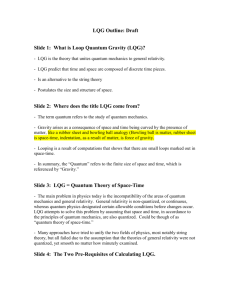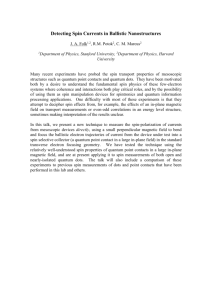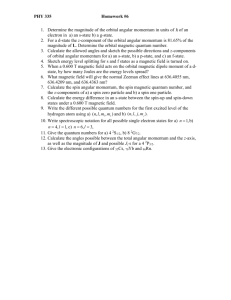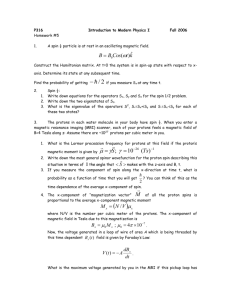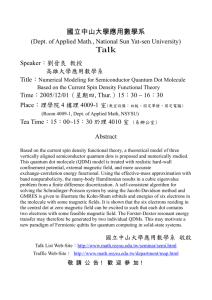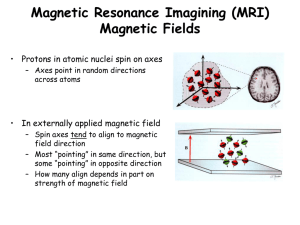Pitkanen_12
advertisement
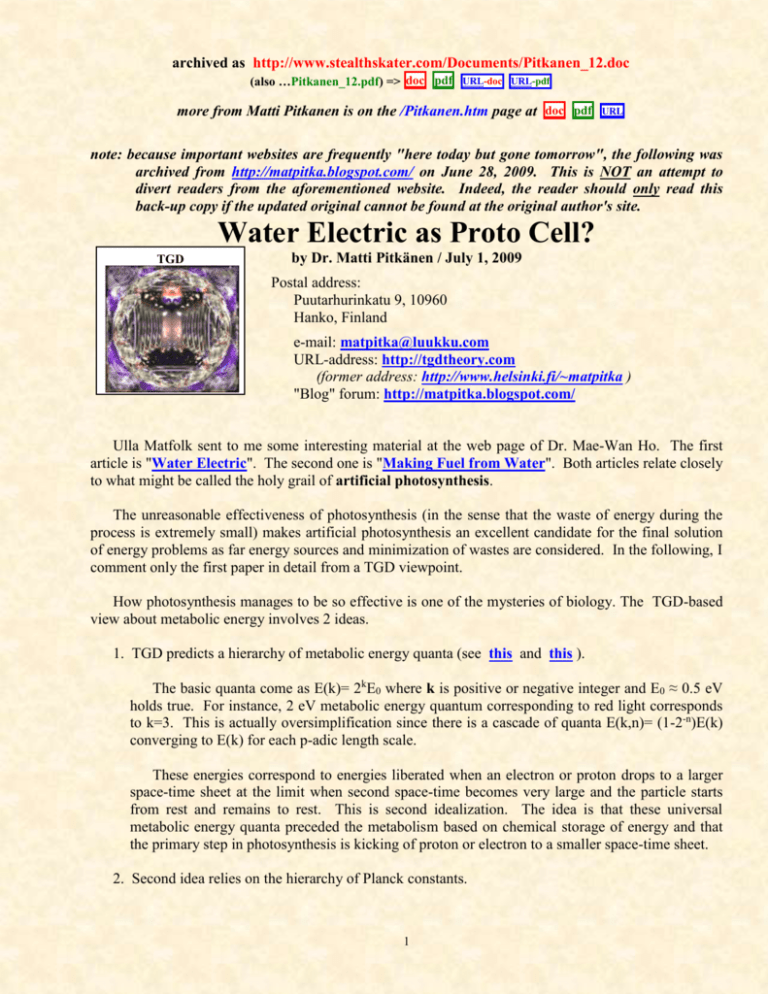
archived as http://www.stealthskater.com/Documents/Pitkanen_12.doc (also …Pitkanen_12.pdf) => doc pdf URL-doc URL-pdf more from Matti Pitkanen is on the /Pitkanen.htm page at doc pdf URL note: because important websites are frequently "here today but gone tomorrow", the following was archived from http://matpitka.blogspot.com/ on June 28, 2009. This is NOT an attempt to divert readers from the aforementioned website. Indeed, the reader should only read this back-up copy if the updated original cannot be found at the original author's site. Water Electric as Proto Cell? TGD by Dr. Matti Pitkänen / July 1, 2009 Postal address: Puutarhurinkatu 9, 10960 Hanko, Finland e-mail: matpitka@luukku.com URL-address: http://tgdtheory.com (former address: http://www.helsinki.fi/~matpitka ) "Blog" forum: http://matpitka.blogspot.com/ Ulla Matfolk sent to me some interesting material at the web page of Dr. Mae-Wan Ho. The first article is "Water Electric". The second one is "Making Fuel from Water". Both articles relate closely to what might be called the holy grail of artificial photosynthesis. The unreasonable effectiveness of photosynthesis (in the sense that the waste of energy during the process is extremely small) makes artificial photosynthesis an excellent candidate for the final solution of energy problems as far energy sources and minimization of wastes are considered. In the following, I comment only the first paper in detail from a TGD viewpoint. How photosynthesis manages to be so effective is one of the mysteries of biology. The TGD-based view about metabolic energy involves 2 ideas. 1. TGD predicts a hierarchy of metabolic energy quanta (see this and this ). The basic quanta come as E(k)= 2kE0 where k is positive or negative integer and E0 ≈ 0.5 eV holds true. For instance, 2 eV metabolic energy quantum corresponding to red light corresponds to k=3. This is actually oversimplification since there is a cascade of quanta E(k,n)= (1-2-n)E(k) converging to E(k) for each p-adic length scale. These energies correspond to energies liberated when an electron or proton drops to a larger space-time sheet at the limit when second space-time becomes very large and the particle starts from rest and remains to rest. This is second idealization. The idea is that these universal metabolic energy quanta preceded the metabolism based on chemical storage of energy and that the primary step in photosynthesis is kicking of proton or electron to a smaller space-time sheet. 2. Second idea relies on the hierarchy of Planck constants. 1 A. The rate of dissipation -- that this the energy wasted per unit time -- is inversely proportional to hbar in the first naive guess and means that Macroscopically quantum coherent dark matter dissipates very little. Could photon kick charged dark particles to smaller space-time sheet where they dissipate very little? Or could photosynthesis capture ordinary or dark photons of sunlight to some layer of the onion like structure formed by the magnetic body of the organism where it kicks particles to smaller space-time sheets. This light could correspond to biophotons liberated as the biological body of the organism dies. B. Could this storage of photons have preceded chemical storage of energy in living matter? And could this energy reserve explain some rather mysterious findings about the ability of some people to survive without ordinary metabolic energy feed (usually saints and this kind of people telling that light is enough for them to survive;-)? Also animals are capable to these metabolic miracles (see the article "Researchers Seek to Demystify the Metabolic Magic of Sled Dogs"). Of course, the storage of energy to that of dark matter or dark photons confined to the net defined by magnetic flux tubes could be the eventual manner to avoid energy waste and associated entropy growth inducing environmental problems. Hierarchy of Planck constants would allow the storage in arbitrary long length scales for given energy of photon so that even a community of organisms could have collective metabolic energy resources: maybe synergy has something to do with this;-). The first article gives quantitative support for this picture. Exclusion Zones The article summarizes the sequence of events initiated by the discovery of Gerald Pollack and his student Zheng Jian-ming. As a matter fact, the fascinating findings described in detail by Gerald Pollack in (the introduction of - I could not of course afford any book as a scientific dissident in Finland!) his book were absolutely crucial for the recent TGD-based view about Quantum Biology in which dark matter plays key role. 1. Pollack and his student discovered that suspensions of colloids and dissolved substances are excluded from a region extending some hundreds of micrometers from the surfaces of hydrophilic gels. An "exclusion zone" (EZ) of this magnitude conflicts the belief that interfacial water forming at liquid-solid or liquid-air interfaces can be no more than a few layers of molecules thick. What’s observed is a million layers or more! Comment: The sizes of cells vary up to hundreds of micrometers and cells are by definition structures which are isolated from the environment. Maybe EZs represent protocells or their predecessors. 2. Similar exclusion zones were found next to any hydrophilic surface including surfaces coated with a monolayer of hydrophilic molecules and around ion exchange resin beads. Electric charge appears to be important as EZ failed to form around charge-exhausted resin beads. Although EZ can form in pure water, it is enhanced and stabilized by low concentrations of buffer (2 to 10 mM at pH 7). 2 3. The EZ phase is very different from the bulk water. An unusually ordered crystalline phase where the molecules are less free to move is suggested. The UV and visible absorption spectrum gave a single absorption peak at ≈270 nm in the UV region completely absent in the bulk phase. The infrared emission record showed that the EZ radiates very little compared with bulk water, as would be expected on account of the reduced mobility of water molecules. The magnetic resonance imaging mapping similarly gave a transverse relaxation time (T2) of 25.4 + 1 ms which is shorter than the 27.1 + 0.4 ms recorded for the bulk water phase. Again indicative of restricted motion. Comment: The reduced radiation might mean that part of photons are dark and bound inside magnetic flux tubes defining a structure responsible for the formation of gel-like phases inside cell and perhaps also inside EZ. The interpretation as biophotons is suggested. This phase of water could be predecessor of the water in cell interior since in the crystalline phase long biopolymers like DNA and aminoacid sequences would be stable against hydration. 4. EZ had a different electrical potential from the bulk phase, by as much as 100-to-200 mV depending on the hydrophilic surface. With a negatively-charged surface such as polyacrylic acid or Nafion (widely used as a proton exchange membrane), the potential is negative compared with the bulk water away from the EZ. Simultaneously, the hydrogen ion (proton, H+) concentration is high just outside the EZ, decreasing in a gradient away from it. This indicates that the formation of the EZ is accompanied by a separation of positive and negative electrical charges which led to the build up of electrical potential between the EZ and the bulk water. In effect, the water has become an electrical battery and can provide electricity through an external circuit. Comment: Cell membrane is also a battery and the potential is around 50-to-80 mV to be compared with 100-to-200 mV. And the size scale of cell varies from 5 micrometer to hundreds of micrometers so that EZs could be involved with the formation of cell and cell membranes. The kicking of electrons or protons to smaller space-time sheet could be the mechanism inducing electric potential at a given space-time sheet. The formation of battery would mean that water could some day used to store very effectively the energy of solar radiation. a connection with Photosynthesis Separating H+ from e- (electron) is the first step of photosynthesis in green plants which provides energy for most of the biosphere. In this case, the energy comes from solar radiation. The separation of charges requires energy also in the case of EZ and the question is where this energy comes from in the case of EZ. 1. A clue came after having inadvertently left the experimental chamber with the EZ on the microscope overnight. Next morning, the EZ had shrunk considerably. But after turning on the microscope lamp, it began to immediately grow again, restoring itself within minutes to its former size. The energy for EZ formation comes from light as in photosynthesis. But it can use the low energy part of the solar spectrum that photosynthesis cannot. 3 Comment: Could one consider the possibility that photosynthesis involves unknown step and this step is just the kicking of electrons or protons to a smaller space-time sheet. This step would also induce the separation of charges and the generation of electric potential. 2. Although the entire spectrum of visible light appeared effective in making the EZ grow, the most effective part is in the infrared region, peaking at ≈ 3100 nm. A 10-minute exposure at that wavelength expanded the width of an EZ 3.7 times. And after an hour of exposure, the expansion was more than 6 times. After the light was turned off, the EZ remained constant for about 30 minutes before beginning to shrink, reaching halfway to its baseline level in about 15 minutes. Comment: 3100 nm corresponds to 0.4 eV. The nominal value of the fundamental metabolic energy quantum is around E0 = 0.5 eV and one has E(k=0,n=3)= 0.4375 eV for this value of E0. Perhaps the photons indeed kick electrons or protons to a smaller space-time sheet. A. In the case of protons, the smaller space-time sheet would correspond to atomic space-time sheets characterized by p≈2137. The larger one would correspond to k=141. B. For electrons, the size of the smaller space-time sheet would be by a factor mp/me= 940/0.5=1880 ≈ 211 larger and would correspond to k = 137+11=148. This is one-half of the thickness of the lipid layer of cell membrane. The larger space-time sheet would correspond to cell membrane thickness L(151)=10 nm and perhaps the dark space-time sheet serving as a template for the formation of the cell membrane! If 0.4 eV corresponds to electron, then proton would correspond to 0.44 eV giving for the metabolic energy quantum the value E0(p) = 0.5029 eV in the case of proton and E0(e) = 0.4616 eV in the case of electron. 3. When the UV and visible range was tested, a peak in the degree of EZ expansion was detected at 270 nm in the UV region corresponding to the characteristic absorption peak of EZ that was identified before. However, as the optical power used in the UV and visible region was 600 times that in the IR, the most profound effect was identified in the IR region -- particularly at 3100 nm. Comment: 270 nm corresponds to the energy 4.5926 eV. E = 4 eV is the nearest metabolic energy quantum. This energy does not correspond directly to any metabolic energy quantum assignable to 0.4 eV or 0.43 eV. One must be, however, cautious with conclusions since the model is very rough. 4. The mechanism of EZ formation is still unknown. But the 2 wavelengths that expand the EZ most effectively may offer some hint. The UV 270 nm is close to the 250 nm (≈5 eV) required to ionize water under standard state conditions and taking into account the hydration of the resulting ions. The 3100 nm peak, on the other hand, is close to the OH stretch of the ring hexamer identified as the most abundant species in infrared predissociation spectroscopy of large water clusters and also in neon matrices by infrared spectroscopy. These results suggest that photoexcitation of ring hexamers and photoionisation followed by ejection of protons play synergistic roles in the assembly of the EZ phase. Pollack and colleagues believe that the infrared radiation -- though normally insufficient to break OH bonds 4 -- can nevertheless work via resonance induced dissociation of large hydrogen-bonded networks. Comment: Ring hexamers bring to mind the crucial role of aromatic cycles in the TGD-inspired model of DNA as a topological quantum computer which also leads to a model of ADP→ATP transition involving reconnection of magnetic flux tubes and having also information theoretic interpretation as a change of the topology of the braid structure defining topological quantum computer program (see this). Magnetic flux tubes carrying dark electrons begin from these and can end up to other biomolecules or water. Just a guess: could they end on ring hexamers? Summary The findings suggest additional details to the TGD-based view about living matter. 1. The kicking of electrons or protons (or both of them) to a larger space-time sheet would be the first step in photosynthesis as indeed suggested for years ago. The energy of 3100 nm photons indeed corresponds to that for the fundamental metabolic energy quantum. 2. The findings also suggest a mechanism for how solar radiation generates protocells or their predecessors. The resulting phases of water have size extending to those for largest cells and the water could involve a gel-like phase in which magnetic flux tubes containing dark matter could play a key role and eventually lead to quantum computer like behavior (see this). The kicking of electrons (or protons) to smaller space-time sheet would induce ionization at given space-time sheet so that electric potential difference would result. The magnitude of the potential difference is of a correct order of magnitude. Cell membrane scale is present as a padic length scale for the space-time sheet of electrons before the kicking to the smaller spacetime sheet and these space-time sheets could act as templates for the formation of cell membrane. 3. Interestingly, the TGD-based model of high-Tc superconductivity predicts that both cell membrane length scale and size scale of cell are involved with the superconductivity (see this). Cell membrane acts as a Josephson junction in the TGD-based model of cell membrane, nerve pulse, and EEG (see this). For more detailed representation and for references, see the chapter "Quantum Model for Nerve Pulse" of TGD and EEG. A Model for Chiral Selection by Matti Pitkanen / July 3, 2009 Chiral Selection of bio-molecules is one of the basic mysteries of Biology. It is interesting to see whether the existing bits of data combined with vision about Quantum TGD could help to build a coherent picture about the situation. Let us first try to identify the most important pieces of the puzzle. 1. Chiral Selection requires parity breaking in the scale of biomolecules. The Standard Model of Particle Physics predicts parity breaking interactions. But the effects are extremely small -5 above intermediate boson length scale which is by a factor 10-7 shorter than atomic length scale. The proposed solution of the problem is that dark variants of intermediate gauge bosons are in question so that the Compton lengths of intermediate gauge bosons are scaled-up by a factor r = hbar/hbar0. Below the dark Compton length, weak gauge bosons would be effectively massless and above it possess ordinary masses. Large parity breaking effects induced by dark intermediate gauge bosons would be possible. 2. For instance, for r=244 for which EEG photons have energies just above thermal threshold at room temperature, the effective p-adic length scale would correspond to L (k), k=89+44=133 of about 0.2 Angstrom. This scale in turn would scale up to L(133+44=177). Secondary p-adic length scale assignable to k=89 which is important in Zero Energy Ontology would correspond to k=2×89 = 178 which corresponds to about L(178) ≈ 100 μm -- the length scale assignable to large cells and the thickness of water layers in the experiments of Pollack and Zheng. 3. Parity-breaking interaction is associated with spin and the interaction energy of form k s•EZ where s is the spin of particle and EZ is Z0 electric field. Classical-induced gauge fields are very strongly correlated in TGD since they are expressible in terms of four CP2 coordinates and their gradients. Hence the Classical electromagnetic field E is in the generic case accompanied by classical Z0 field EZ = aE. This means that if there is Classical electromagnetic field and charge density at the dark space-time sheet, large parity breaking effect is possible at the level of spin. The induced Z0 electric field could force the spins to become parallel and in this manner induce also magnetization. The crucial finding about which I learned 3 years ago is that L-glutamate is more stable than Rglutamate in water and that heavy water does not induce this effect (see this). This suggests a connection with Pollack-Zheng effect (see this and this) which I discussed in previous posting (see above). Heavy water nuclei have vanishing spin whereas hydrogen nuclei have spin 1/2 so that H 2 in water molecules can be in spin singlet or triplet states (para and ortho configurations). Could the nuclear spin of water molecules somehow induce parity breaking and the magnetic interaction distinguishing between these molecules? 1. Suppose that bio-molecules in question have magnetic moment and water carries magnetic field (most naturally at dark magnetic flux tubes). The parity breaking interaction energy p•E with dark electric field remains invariant under reflection and rotation of π changing the orientation of the mirror image of the molecule with respect to electric field. The interaction energy with magnetic field, however, changes its sign since magnetic moment is not affected by the reflection but changes direction under rotation. The angular momentum of the molecule responsible for the magnetic moment can, of course, change sign. But since the transformation involves acts on angular momenta only, it is not a symmetry of entire system. Indeed, if there is interaction between angular momentum degrees-of-freedom and geometric degrees-of-freedom, the magnetic interaction energy for the mirror image is different. Suppose that the breaking of reflection symmetry induced by the chirality of the molecule induces internal electric field Eint. The parity breaking interaction energy k s•Eint would 6 indeed break the symmetry in the transformation changing the directions of angular momenta and spins. 2. It deserves to be emphasized that the parity breaking of the molecule itself would induce the symmetry breaking if molecule possesses dark magnetic body. One can actually imagine a cascade of parity breakings proceeding from shorter to longer length scales in this manner. 3. The mechanism creating the electric field could be the charging of water (perhaps by the PollackZheng mechanism)and having in TGD framework an interpretation as a basic mechanism storing the energy of sunlight to metabolic energy (kicking of electrons and/or protons to a smaller space-time sheet so that oppositely charge space-time sheets emerge as a consequence). A direct connection with metabolism would be admittedly a highly satisfactory feature of the mechanism. 4. Parity breaking energy k s•E for, say, dark protons assignable to hydrogen nuclei of biomolecules in the internal electric field of the molecule or dark protons of water molecules in the electric field induced by Pollack-Zheng effect does not change sign under the reflection of the molecule so that spin polarization independent of chirality could result form both water molecules in crystal-like phase and for bio-molecules possessing dark protons (and dark hydrogen atoms). This could in turn serve as a seed for magnetization essential for the existence of dark magnetic flux tubes. If water is replaced with heavy water, there is no difference between L and R. What distinction H and D could explain this difference? 1. The basic difference between water and heavy water nuclei is that for water nucleus is just proton having spin 1/2 so that H2 in water molecule can be in spin triplet and singlet states. Fractions of the two states are 3/4 and 1/4 in the absence of external magnetic field. 2. On the other hand, in atto-second time scale (corresponding length scale is 3 Angstroms) water is known to behave effectively as H1.5O [5,6,7,8]. A possible explanation is that 1/4th of H nuclei/atoms are effectively dark having a large Planck constant. The dark protons cannot correspond to H2 in spin singlet state since the interaction energy ks•E would be small in this case. Dark spin triplet states of H2 could, however, induce parity breaking in water and make crystal-like water phase both electret and magnet. If the spin sz=1 with negative interaction energy with E becomes dark, then 1/4 of hydrogen atoms would be dark and H1.5O formula would hold true. For D2O, this mechanism would not work. 3. The model for homeopathy led to the idea that dark nuclei consisting of scaled-up variants of nucleons -- possibly having size of order atomic length scale -- could be crucial for understanding living matter. The states of nucleons correspond naturally to those DNA, RNA, and aminoacids and vertebrate genetic code emerges naturally with DNA code word replaced with 3 quark state with entanglement between the quarks representing the information. Could it be that dark protons of water combine to form dark nuclei providing a fundamental representation of the genetic code and could the spin of protons induce electro-weak chiral symmetry breaking? Also now this mechanism fails for D2O. 7 For more detailed representation, see the chapter "Quantum Model for Nerve Pulse" of TGD and EEG. See also the earlier water memory related posting (above) and the chapter "Homeopathy in Many-Sheeted Space-Time" of Bio-Systems as Conscious Holograms where the nuclear realization of the genetic code is also discussed. References 1. Mae-Wan Ho (2009), Water Electric. Institute of Science in Society report. 2. Zheng, Jian-ming, Pollack, G. (2003), Long-range forces extending from polymer-gel surfaces. 3. G. Pollack, X. Figueroa, Qing Z. (2009), "Molecules, Water, and Radiant Energy: new clues for the origin of Life." International Journal of Molecular Sciences 2009;10(4):1419-29. 4. Z. Merali (2006), "Water gave life on Earth a guiding hand", New Scientist, issue 2540, 25 February. 5. M. Chaplin (2005), Water Structure and Behavior. http://www.lsbu.ac.uk/water/index.html. The description of 41 anomalies of water also contains an explanation of the H1.5O anomaly. 6. J.K. Borchardt(2003), "The chemical formula H2O - a misnomer", The Alchemist, 8 Aug (2003). 7. R.A. Cowley (2004), "Neutron-scattering experiments and quantum entanglement", Physica B 350 (2004) 243-245. 8. R. Moreh, R.C. Block, Y. Danon, and M. Neumann (2005), "Search for anomalous scattering of keV neutrons from H2O-D2O mixtures", Phys. Rev. Lett. 94, 185301. if on the Internet, Press <BACK> on your browser to return to the previous page (or go to www.stealthskater.com) else if accessing these files from the CD in a MS-Word session, simply <CLOSE> this file's window-session; the previous window-session should still remain 'active' 8
